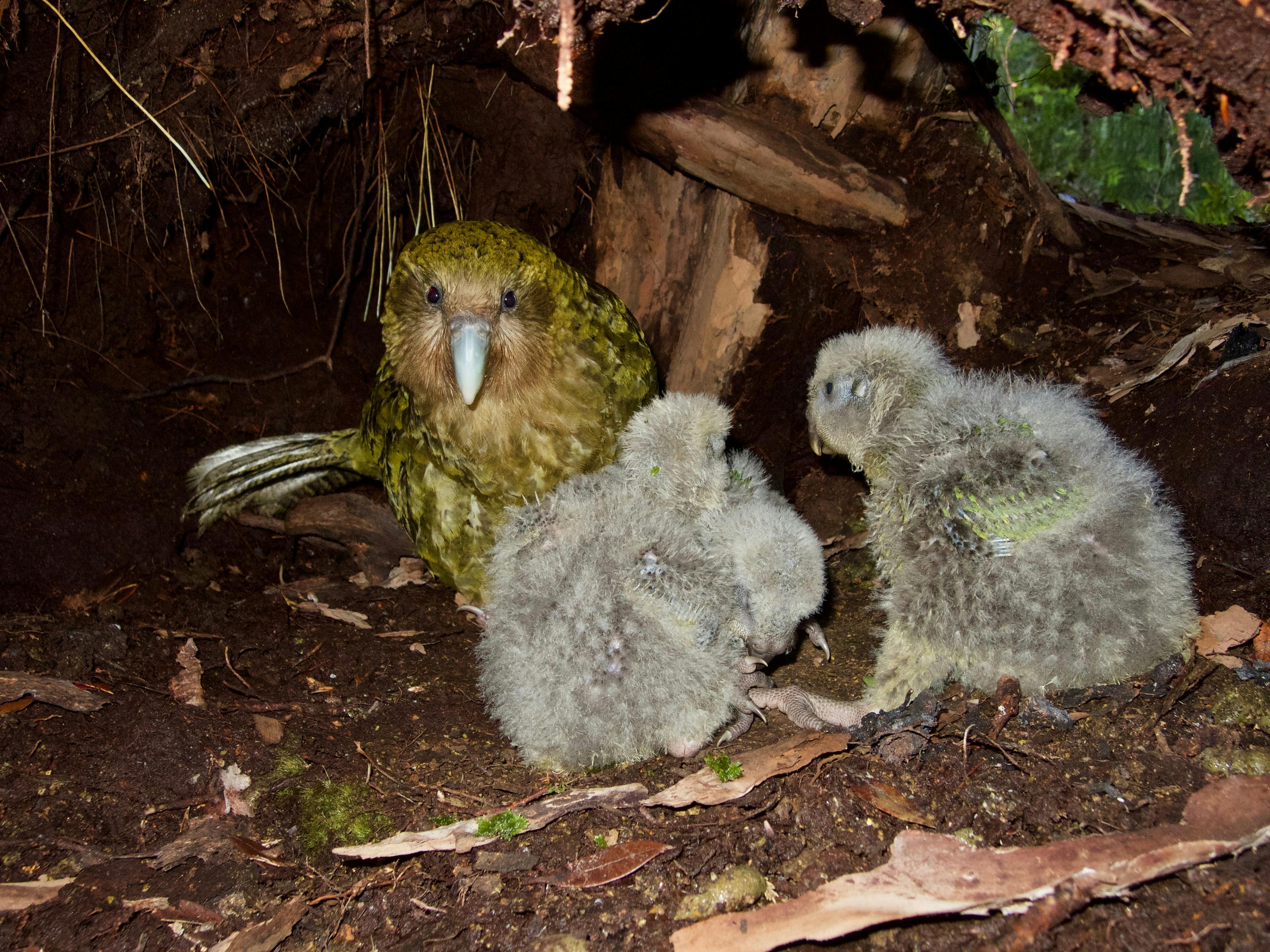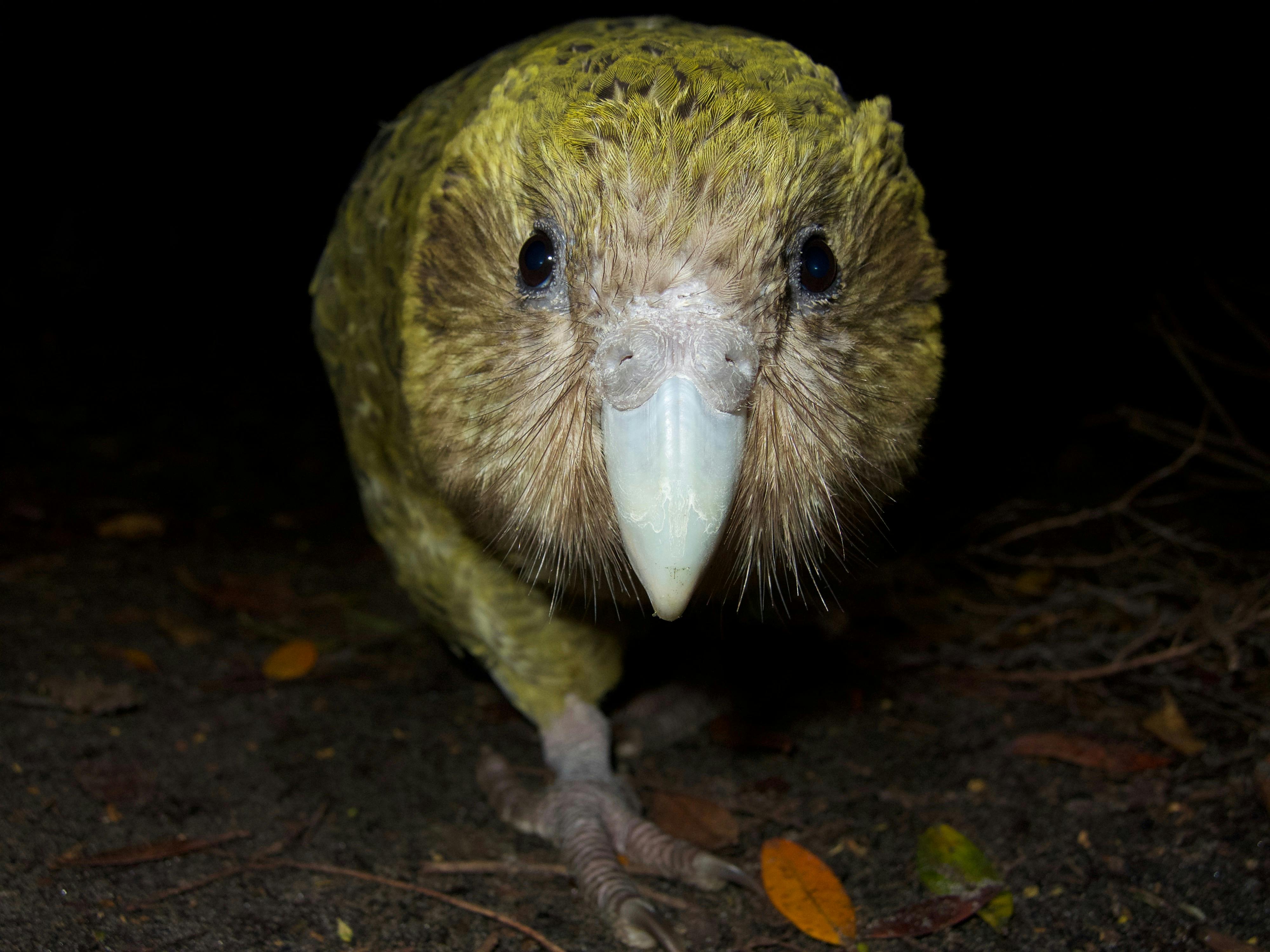A record-setting breeding season has been tempered by a fungal disease that has killed kākāpō chicks and adults.
Six weeks ago, Dr Andrew Digby from DOC’s Kākāpō Recovery Programme was over the moon.
He had witnessed the best kākāpō breeding season on record. The species’ remaining 142 adult birds had managed to produce 252 eggs, more than double the previous record set in 2016. Even though just 118 of those eggs were actually fertile and just 76 hatched, things were looking up for the bird which has been painstakingly brought back from the brink of extinction.
But there has been a sting in the tail to the breeding season that has demonstrated once again just how vulnerable the kākāpō is.
In the past six weeks, two adult females and five chicks on Whenua Hou, the island sanctuary off the coast of Stewart Island where the majority of kākāpō live, have died from aspergillosis – a fungal infection that causes respiratory problems. A further 36 birds, including five adult females, have been evacuated from the island for specialist treatment to battle the fungus. Smaller populations of kākāpō are kept on Anchor Island in Fiordland and Little Barrier Island in the Hauraki Gulf, but so far it is only birds on Whenua Hou that have been affected by aspergillosis.
Little is yet known about why the birds are getting sick from the fungus, which is found, literally, everywhere.
“It’s a really common fungus,” Digby says. “You’ll be breathing aspergillosis in now. It’ll be in our lungs it’ll be in the birds’ lungs and usually, it doesn’t cause a problem.”
Where it can cause a problem in humans is if someone has an existing immuno-suppression issue, like that found in people with HIV or cancer. “It’s the same in birds,” Digby says. “If they’re weak for some reason, maybe they have another disease or a virus, they can succumb to it.”

It’s possible an abundance of the aspergillosis fungus infected birds in the nest. Photo: Andrew Digby
The amount of aspergillosis in the environment may also be a factor. The fungus thrives in warm and dry environments and Digby doesn’t think it’s a coincidence birds are getting sick after Whenua Hou has just been through its warmest and driest summer on record. “We don’t know at this stage whether there is an underlying disease, or if there’s just a really high level of the fungus around at the moment,” he says. “We’re suspecting it might be the latter because we’ve only had chicks and females affected so far – they’ve been in the nests, in a closed environment which is a good place for the fungus to live.”
Digby put out a call for donations to help fund the transfer of birds suspected of being ill with aspergillosis from Whenua Hou. More than $100,000 has been raised from the public here and overseas.
“DOC is pulling out the stops to fund it,” says Digby. “But we always seek public donations because it helps us do that bit more – more research and it will help us to treat more birds more quickly.”
Birds with aspergillosis have an uncertain future. The fungus will kill some and those that don’t succumb will require at least six months of intensive daily treatment with anti-bacterial and anti-fungal medication at specialist centres. Most of the affected birds have been transferred to Auckland Zoo, 14 are at Dunedin Wildlife Hospital and two are at Massey University’s vet school in Palmerston North.
The good news is, Digby believes the worst of the fungal infection is behind them now. “We just tested the first chick on Whenua Hou which hadn’t had aspergillosis. It’s a sign we’re past the worst of it.”
But he also sounds a note of caution: not all the surviving kākāpō chicks will reach adulthood: “I’m hoping at least 50 will survive, but it could be less than that,” he says. “Of the ones that get through the aspergillosis, several more will die of other causes.”
But even this glum statistic offers hope for kākāpō, which once numbered as few as 51. If, as Digby hopes, those 50 chicks do survive, they will be the biggest boost to their population since the recovery programme began in 1995.







